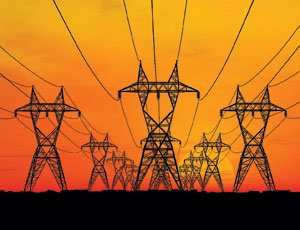Renewable energy is the big energy industry winner in the stimulus bill signed into law on Feb. 17. By ENR’s estimate, the new law provides $30.6 billion in energy-related spending and tax incentives. But a provision for $50 billion in federal loan guarantees to build new nuclear power plants was dropped from the bill that emerged from the conference reconciling the House and Senate versions.

While welcome, cash, tax credits and loan guarantees may not be what’s most needed. “The renewable-energy industry is doing fairly well, but they’re having trouble getting credit,” says John Colson, CEO of Quanta Services, Houston. “The credit issue affects our wind customers,” he says. “The solar side is primarily by utilities. They’re able to raise money pretty well, certainly for transmission projects.” In any event, “permitting is where the problems are [for transmission], not the financing of projects,” he says.
The Natural Resources Defense Council and other environmental groups applauded conferees for retaining an array of programs aimed at boosting wind, solar and other clean energy and for jettisoning the nuclear loan guarantee program. Contractors serving those sectors say the law’s effects will be seen over time, rather than as a wave surging through the economy.
“The renewable industry has sustained itself so far,” says Tim Gelbar, president of AMEC Power and Process Americas, Atlanta. “This will give a little boost.” He says the law will help projects already in development. “It’s a positive position for this marketplace. It won’t make a huge difference. It will produce a little more work.”
Renewable energy programs in the final bill suffered a few “nicks,” said Nebraska Sen. Ben Nelson (D). The law will not provide a five-year tax-credit carry back for renewable- energy developers, which was stripped out of the Senate bill. Further, energy grants to states and local governments appeared to have been reduced, according to a House Energy and Commerce summary circulated Feb. 12, which showed $3.1 billion for that purpose.
Production tax credits for renewable energy were extended for wind energy through 2012 and for biomass, geothermal and some others through 2013.
A new 30% investment tax credit for manufacturers of smart-grid technologies, renewable-energy power equipment and carbon-capture and storage equipment was included in the final bill. The legislation calls for $45 billion in energy expenditures, including a major new investment in energy transmission. This amount includes $4.5 billion for a “Smart Grid Investment Program,” as well as new loans and grants to develop advanced vehicle batteries for electric cars, help states and local governments reduce energy usage and spur more renewable energy R&D.

But for contractors, “details of the smart grid are fairly murky,” says Colson. The bill’s language is about “modernization of the grid,” he notes, more than specific technologies. He expects to see the money go into research grants more than projects.
The nuclear energy industry did not dwell on its disappointment. “We’re confident that while this particular opportunity has passed, there will be others,” says Steve Kerekes, a spokesman for the Nuclear Energy Institute.
The industry’s optimism may prove misplaced, however. Aides say its loan guarantees were cut at the urging of House Speaker Nancy Pelosi (D) and House Energy and Commerce Committee Chairman Henry Waxman (D), who will oversee the chamber’s work on energy legislation later this year.
The legislation provides $3.4 billion for fossil-fuels research and development. This amount includes $1 billion for “fossil energy research and development programs,” which could be used for the Future Gen project that key Democratic lawmakers want to build in Mattoon, Ill.
��

Post a comment to this article
Report Abusive Comment